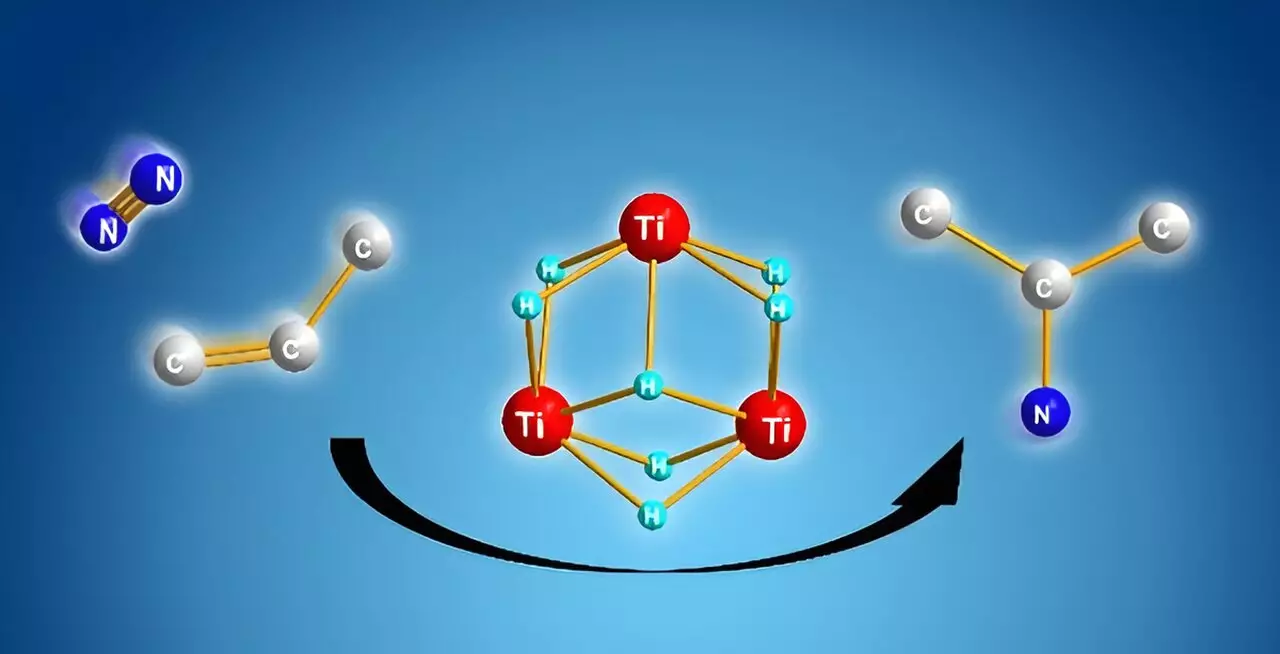Dinitrogen (N2) is a molecule that pervades our atmosphere, constituting almost 80% of the air we breathe. Despite its abundance, the chemistry community has long grappled with leveraging this resource for practical applications, particularly in the synthesis of key industrial compounds. Recent research spearheaded by chemists at RIKEN has illuminated an innovative pathway utilizing dinitrogen directly in the formation of azoles and aliphatic amines, a leap that holds promise for increasing the efficiency of drug formulations and polymer development.
Conventional chemical processes often rely on the Haber-Bosch method to convert nitrogen gas into ammonia, which serves as an intermediary in creating various nitrogen-containing compounds. This procedure is notoriously energy-intensive, requiring high temperatures and pressures, which come at a significant environmental cost. Moreover, synthesizing derivatives from alkenes usually mandates their functionalization into alcohols or acids prior to combining them with nitrogen sources. These extra steps not only complicate the reactions but also add layers of inefficiency and increased expenditure in energy resources.
Takanori Shima, a researcher at the RIKEN Center for Sustainable Resource Science, emphasizes the drawbacks of these methods. There has been a pronounced need for alternative approaches that could harness the reactivity of dinitrogen in tandem with other compounds without these cumbersome pre-activation processes.
Shima and colleagues previously pioneered a novel methodology that capitalizes on titanium polyhydrides, unique complexes where titanium atoms are linked by hydrogen atoms. This groundbreaking work has revealed that these complexes possess the capability to react vigorously with stable molecules, such as dinitrogen gas and hydrocarbons like benzene. The current study showcases a significant advancement: the utilization of these titanium polyhydrides to streamline the synthesis of alkyl amines and other derivatives directly from dinitrogen and alkenes.
The cooperative interaction between multiple titanium-hydride units is central to this methodological breakthrough. The researchers have demonstrated that upon introducing alkenes to the titanium polyhydride, the system activates the alkenes while retaining several hydride units. When dinitrogen enters the reaction milieu, the free hydrides play a pivotal role in cleaving the robust N≡N bond, leading to the formation of new nitrogen-carbon bonds effectively and efficiently.
An integral aspect of this discovery lies in the mechanistic understanding of how these interactions occur at the molecular level. Computational models indicate that once both the nitrogen and carbon sources are activated, the titanium polyhydride framework selectively facilitates the creation of nitrogen-carbon bonds over alternative pathways that could yield less desirable byproducts like nitrogen-hydrogen or carbon-hydrogen bonds. This selectivity not only enhances the efficiency of the reaction but also minimizes waste, a key factor in sustainable methodology.
One cannot overlook the broader implications of this research; transitioning to a more sustainable chemical manufacturing paradigm will not only lower costs but also reduce the carbon footprint associated with traditional synthetic methods. Furthermore, catalyzing these reactions could foster even greater efficiency in industrial applications.
The implications of Shima and his team’s findings extend far beyond the laboratory. With their sights set on optimizing this process for catalytic usability, the challenge remains to translate this single-use reaction into a continuous, scalable process suitable for industrial implementations. Achieving this could revolutionize how chemists approach the synthesis of vital compounds, fostering innovation across pharmaceuticals and materials science.
The research spearheaded by RIKEN serves as a pivotal movement in the field of chemistry, with dinitrogen and titanium polyhydrides at its helm. By circumventing traditional methodologies and enhancing energy efficiency, this advancement not only improves reaction times and sustainability but also propels us toward a future where the vast resources available in our atmosphere can be harnessed for practical applications. The pathway forward is illuminated, and the potential is expansive.

